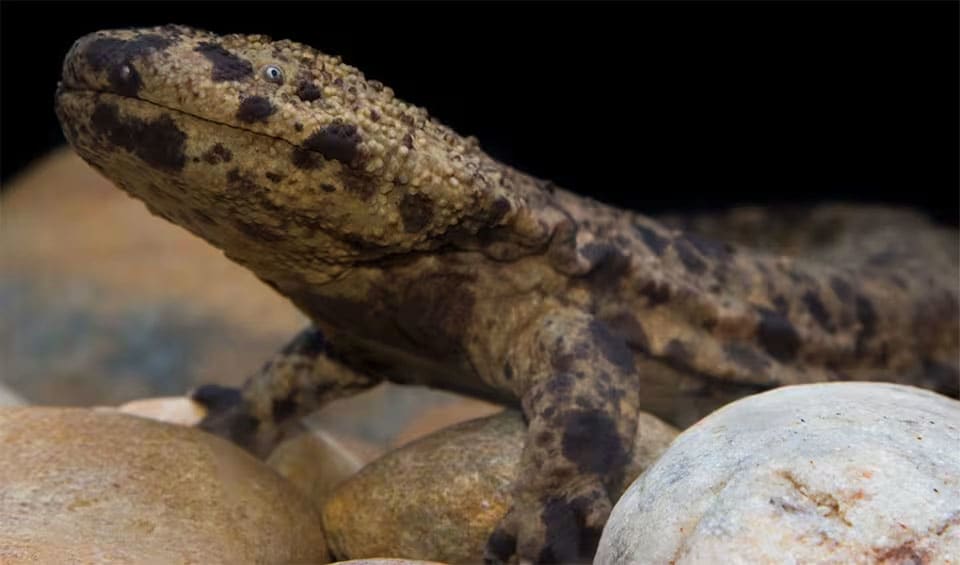Andrias – Giant salamanders
A genus containing world’s largest salamanders including the Chinese giant salamander
Known for their impressive size and distinctive appearance, giant salamanders are characterized by their wrinkled skin adorned with intricate patterns of black and brown. Some individuals may exhibit darker brown patches, while others have lighter variations, adding to their unique charm.
One of the most astonishing features of giant salamanders is their remarkable regenerative ability. When faced with injuries or threats, these amphibians can produce new skin and even regenerate bone tissue. This regenerative prowess is crucial to their survival, enabling them to recover from injuries and adapt to challenging environments.
Giant salamanders are primarily aquatic and nocturnal creatures, spending their active hours concealed along the bottoms of streams and rivers. Their preference for these hiding spots helps them avoid predators and conserve energy while foraging for prey. These secretive habits make them elusive and difficult to observe in the wild, adding to their mysterious allure.
However, the giant salamander faces a dire threat to its existence due to a combination of factors, including habitat loss, water pollution, and overharvesting of natural populations. Among the genus members, the Chinese giant salamander (Andrias davidianus) has suffered catastrophic population reductions, earning it a critically endangered status on the IUCN Red List. This species, once widespread in China, now faces the imminent risk of extinction.
Species in this genus
Chinese giant salamander
A gargantuan beast, though harmless. Not many predators dare touch it —except for, of course, humans
Japanese giant salamander
The legendary Japanese creature called the kappa might just owe its eerie origins to this mysterious salamander


